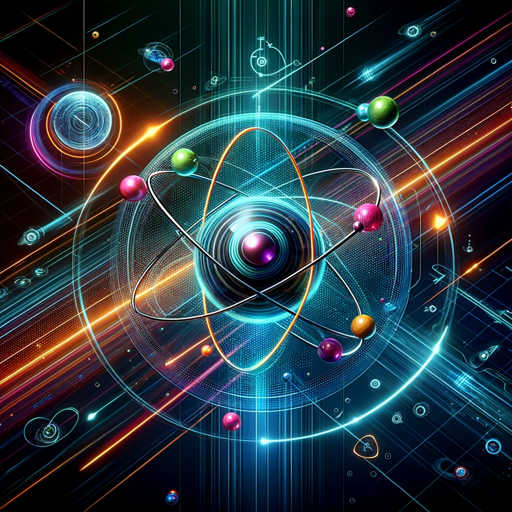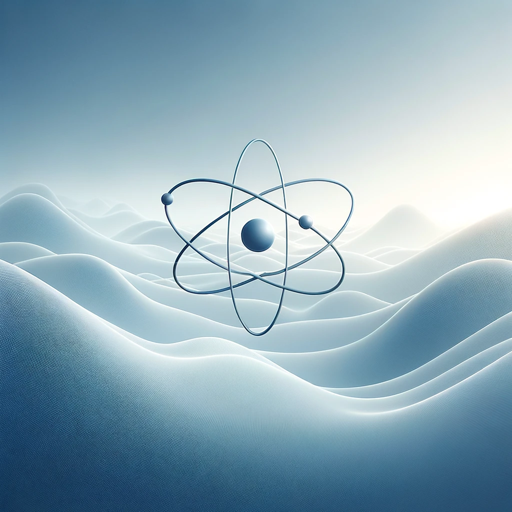Particle Physics-quantum and particle physics problem solver
AI-powered problem solver for particle physics
Explain the different terms in the SEMF
What is isospin?
What are magic numbers?
Teach me the rules of Feynman diagrams
Related Tools
Load More
Physics Tutor
Explaining Physics with Clarity and Insight

Undergrad Physics GPT
I'm an AI tutor specializing in undergraduate physics, here to explain concepts and solve problems.

Graduate Level Physics GPT
Expert in advanced physics, insightful and precise
Professor Phy.
Your Personalized Physic Tutor. Upload an Image or Type Your Question to Begin. Create an account at nerd-notes.com to supercharge your learning with Phy.

Physic Homework Helper
Solver & explainer for complex physics problems with step-by-step guidance.

Quantum Mechanics
Navigate the quantum realm with an expert guide, unraveling mysteries with clarity and insight.
20.0 / 5 (200 votes)
Introduction to Particle Physics
Particle physics is the study of the fundamental constituents of matter and the interactions between them. It explores the smallest building blocks of the universe, such as quarks, leptons, and bosons, and the forces that govern their behavior, like the electromagnetic, weak, and strong forces. The field's core objective is to understand how these particles interact, combine, and give rise to the observable properties of the universe. An example of a fundamental concept in particle physics is the Standard Model, which categorizes all known elementary particles and describes their interactions. For instance, protons and neutrons, which form the nucleus of an atom, are made of quarks bound together by the exchange of gluons, the force carriers of the strong interaction. Another example is the discovery of the Higgs boson, which provides particles with mass. These discoveries are often made in large-scale experiments, such as those conducted at the Large Hadron Collider (LHC), where particles are accelerated to near light speeds and collided to study their fundamental properties and interactions.

Main Functions of Particle Physics
Studying Fundamental Forces and Particles
Example
Investigating the interactions between quarks and gluons in a proton.
Scenario
Researchers use high-energy particle collisions to probe the structure of protons and neutrons. For instance, deep inelastic scattering experiments have provided insights into the distribution of quarks inside protons, which is crucial for understanding the strong force.
Exploring Physics Beyond the Standard Model
Example
Searching for dark matter candidates.
Scenario
Experiments like the ATLAS and CMS detectors at the LHC look for signals that cannot be explained by the Standard Model, such as particles that could constitute dark matter, which interacts weakly with ordinary matter but is essential for the gravitational structure of the universe.
Understanding the Early Universe
Example
Simulating conditions shortly after the Big Bang.
Scenario
By recreating high-energy conditions similar to those just after the Big Bang, scientists can study the behavior of matter at extremely high temperatures and densities, providing insights into the evolution of the universe and the formation of particles like quarks and gluons into protons and neutrons.
Ideal Users of Particle Physics Services
Academic Researchers and Students
Researchers and students in the field of physics benefit greatly from particle physics insights, as it provides a foundational understanding of the universe's basic building blocks. This knowledge is crucial for advanced studies in theoretical and experimental physics, enabling them to contribute to cutting-edge research in areas such as quantum field theory, cosmology, and nuclear physics.
Technology and Engineering Professionals
The principles and technologies developed in particle physics, such as accelerators and detectors, have applications in various industries, including medical imaging, materials science, and information technology. Professionals in these fields can leverage these technologies for practical applications, such as developing new diagnostic tools or improving data processing methods.

Steps for Using Particle Physics
Step 1
Visit aichatonline.org for a free trial without login, also no need for ChatGPT Plus.
Step 2
Familiarize yourself with basic nuclear and particle physics concepts, as discussed in the course notes, to optimize your use of this tool for calculations and problem-solving.
Step 3
Enter your specific queries related to quantum mechanics, nuclear reactions, particle physics, or quantum field theory for detailed and mathematically rigorous responses.
Step 4
Review and integrate mathematical solutions provided into your own calculations for academic research or projects.
Step 5
For advanced inquiries, use Particle Physics' explanation mode to explore complex concepts like gauge symmetry, quark interactions, and particle decay processes in-depth.
Try other advanced and practical GPTs
Physics Mentor
AI-driven physics questions and answers

Physics Pro
AI-powered solutions for physics problems.

Visual Physics
AI-powered insights for complex physics.

Physics GPT
AI-Powered Physics Solutions

Compare Agent
AI-powered comparison for any need

Free Agency
Empowering trades entrepreneurs through AI marketing.

GPT Tuner
AI-Powered Solutions Tailored to Your Business

Tone Tuner
AI-powered tool to refine communication.

Guitar Tablature
AI-powered Guitar Tabs for Everyone
Guitar Maestro Pro
AI-Powered Guitar Sheet Music Creator

Guitar Scales & Chords Bot
AI-powered guitar learning tool

祝福语助手
AI-powered祝福语 for Every Occasion

- Quantum Mechanics
- Physics Research
- Theoretical Study
- Equation Solver
- Particle Decay
Q&A about Particle Physics
What types of problems can Particle Physics solve?
Particle Physics can solve complex mathematical and conceptual problems in nuclear and particle physics, such as calculating nuclear binding energy, understanding particle decay, or working through quantum field theory. It offers detailed step-by-step solutions tailored to advanced physics topics.
What are the prerequisites for using Particle Physics?
While no official prerequisites are required, a solid understanding of quantum mechanics and familiarity with nuclear/particle physics concepts will significantly enhance your experience. This includes knowing key equations and principles like the Semi-Empirical Mass Formula or the de Broglie wavelength.
How does Particle Physics help with academic research?
This tool provides detailed, rigorous mathematical explanations of nuclear reactions, decay mechanisms, and particle interactions. It can assist in generating accurate research data, simulating particle behaviors, and offering insights into cutting-edge physics questions.
What is the best way to approach a physics problem with Particle Physics?
To get the most out of this tool, first define the scope of the problem, such as calculating decay rates or energy states. Provide the necessary parameters (e.g., atomic number, energy levels), and use the solutions to cross-reference and build upon your understanding.
Can Particle Physics explain fundamental particles and forces?
Yes, Particle Physics offers in-depth explanations of fundamental particles (quarks, leptons, etc.) and interactions (strong, weak, electromagnetic forces) with supporting mathematical frameworks. It can delve into topics like Feynman diagrams, gauge symmetry, and quantum chromodynamics.